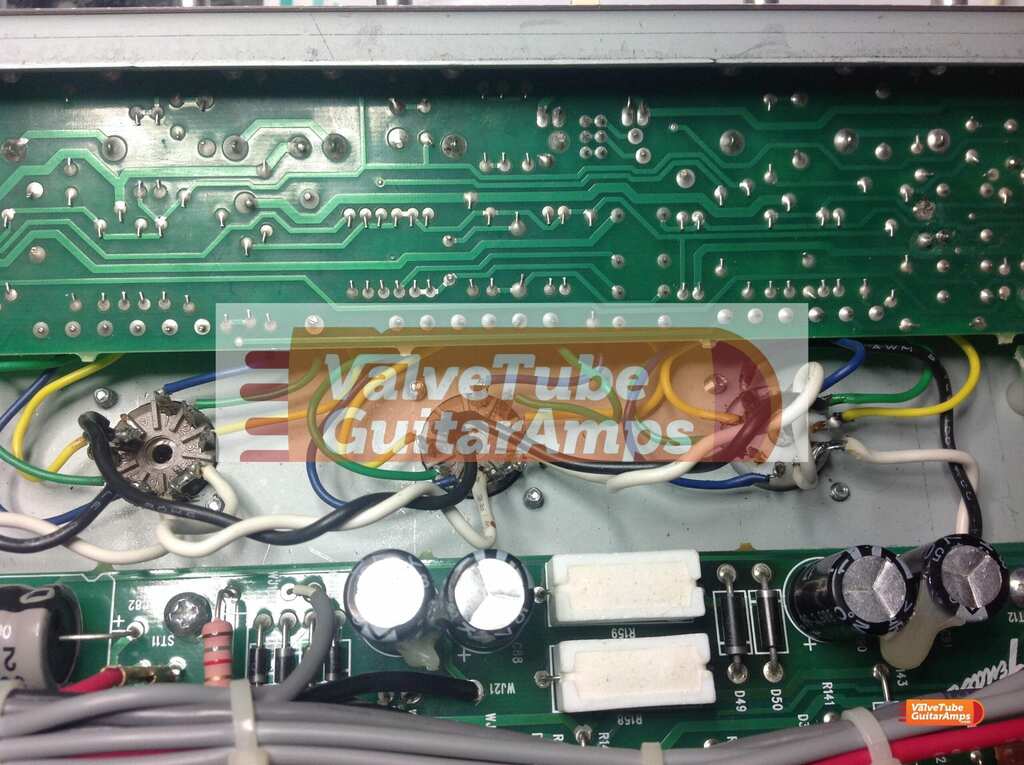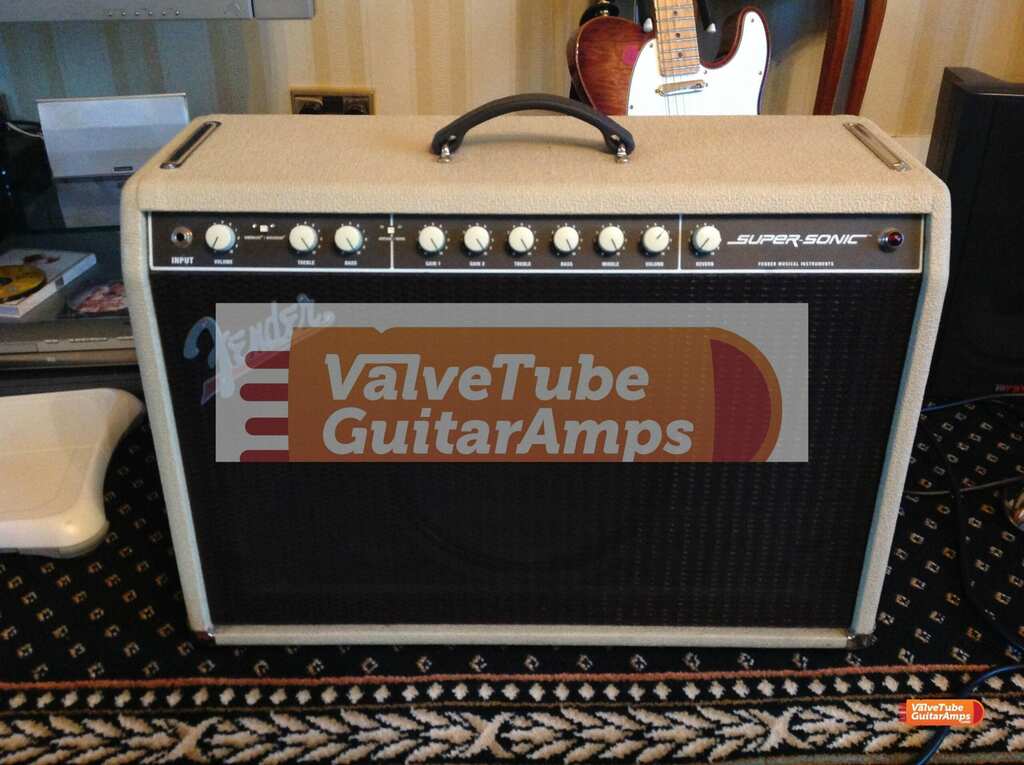A Fender Supersonic 60 arrived as it plainly liked to sing is own praises- when the volume was turned up it howled like a banshee!
The issue was that the amp was totally microphonic. It would work at lower volumes but started howling at higher volumes
The Fender Supersonic is a complex design for a 60 watt amp. It has 10 valves, comprising of 2 x ECC81 ( 12AT7), 6x ECC83 ( 12AX7), and 2x 6L6 output valves.
The ECC81′ are used for the good old Fender reverb and the other is used in the phase splitter. A favourite set up in Fender amps for decades.
The amp has two main ” channels” although their is only one instrument input. One is vintage and the other is burn. The vintage is the clean channel. It has two choices of tone stack being Vibrolux and Bassman. The latter having a deeper tone than the Vibrolux clean sound of the early Fender amps.
The burn channel has more gain built in and gives a gentle crunch at the volumes I tried. Strangely, this amp generated less background hiss than the burn channel that had more gain. This is seemingly quite common in these amps. I did not do any work on improving as the owner only uses the burn channel.
Channel switching is done using little Omron relays but this does cause a bit of popping when the switch over is made.
Summary of Work Done
- Tested existing valves and found worn valves. The output valves surprisingly have some good life left in them which implies the amp is normally run at low volume. The output valves fitted were Fender branded 6L6’s. Before the time that Fender introduced groove tubes.
- Checked and set the bias on the output valves to account for their age and they were set too low so sounded a bit thin
- Pre-amp valves were Groove tubes 12Ax7 ( ECC83S)and Fender branded 12AT7 ( ECC81)
- 5 valves have had to be replaced. It was all the Groove tubes 12Ax7’s that had become microphonic and the sound had lost its sparkle. . Two Sovtek 12AX7WA and three JJ Electronic ECC83S.
- Groove Tubes 12AX7 are Sovtek 12AX7 re-branded. In fact you can see the Sovtek branding on the opposite side to the Fender Grooves branding. The Sovtek
- One valve base on V1 had a faulty pin which was contributing to the microphonics and crackling as the pin was broken, This base was replaced with a higher quality base and the screen can was missing so this was replaced.

- Cleaned all the pots with contact cleaner
- Re-assembled and PAT tested the unit
There was now a nice quiet amp and no micro-phonics ! It also had more top end.
Why use only two Sovtek Pre-Amp valves?
The customer liked the sound of his amp so using a couple in the front end would preserve that sound and using the JJ in the other sockets further along the amplification chain makes good economic sense.
Amp Build Quality
Not the easiest amp to take to pieces but very easy to get out of the cabinet like the old Blackface and Silverface amps.
You have to take the amp out of the cabinet to adjust the bias on the output valves. the old Blackface and Silverface amps had a pot to adjust the bias which can be accessed through the chassis without taking the amp out off the case. Fender missed a trick here, making extra work to set the bias.
Printed circuit board edges had not been smoothed off so there a lot of /sharp edges. Amp-tech man traps !
Printed circuit boards are made in large sheets and then pushed to separate them. Normally the tags are smoothed off but these were not. Wire dressing was pretty good. There were a few suspicious dry joints which were re-soldered. It seems that since the move to lead free solder more dry joints are now in products.
Valves have a very short life , 2-4 years for the pre-amp valves, and 18-24 months for the output valves, so the downside of this amp is that it requires more than average maintainance for a valve amp just having so valves that can fall over and they do !!
It is an amp with a bit of background noise but it is a very versatile amp for performing live and with its pair of 6L6’s can do most pub / small medium gigs with ease. This one competes with another player using a 100 watt amp.
As A Fender fan I would certainly have one of these amps . It fits nicely in between the Fender Deluxe Reverb and its big brother, the back breaking Twin Reverb. There is a 22 watt version too. The cabinet is bigger than a Deluxe Reverb so I would probably go for the 60 watt version as I am having to carry around the extra weight of the cabinet anyway.

